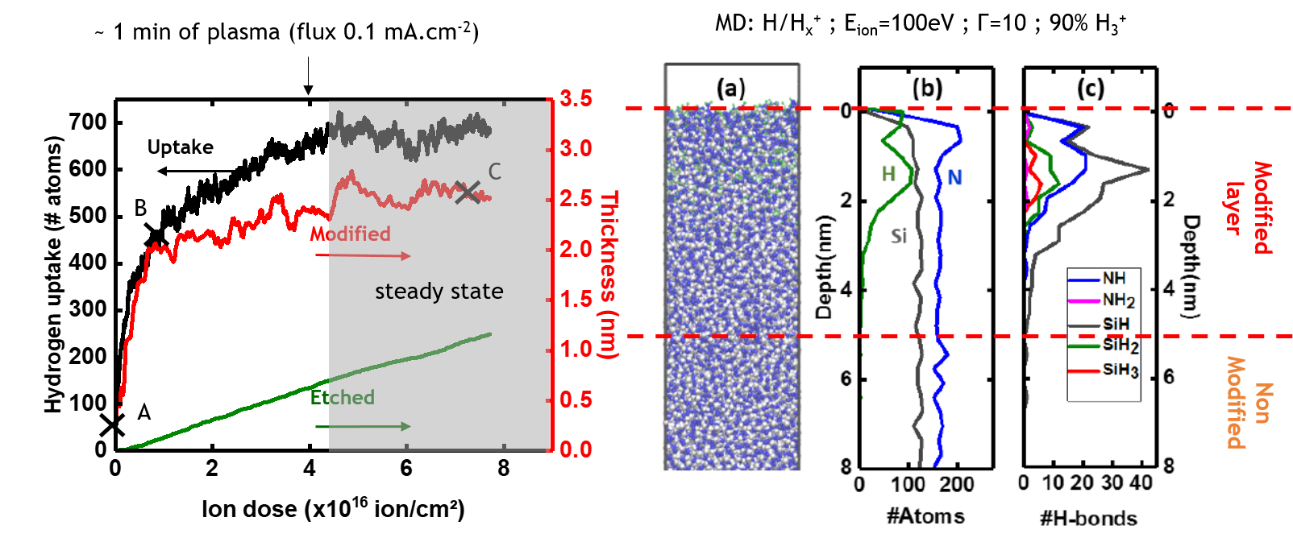- Share
- Share on Facebook
- Share on X
- Share on LinkedIn

Developing advanced etching processes requires a fundamental understanding of the reaction mechanisms involved in plasma-material interaction. Associated with experimental diagnostics, MD simulations can provide information on the processes involved at the atomic scale and help to understand the phenomena governing etching. Since 2014, MD has revealed itself as a powerful tool to assist the development of new processes in the team. The MD work carried out on chlorinated plasma/silicon interactions demonstrated the theoretical feasibility of a PE-ALE (Plasma-Enhanced Atomic Layer Etching) etching concept by ultra-rapid modulation of gas injection (patent), a technology today implemented in the industry. The pioneering simulations carried out on the hydrogen plasma/graphene interaction made it possible to explain the mechanisms of lateral etching of graphene nanoribbons in downstream plasma (observed experimentally but hitherto misunderstood), to provide energy ranges /flow in which H2 plasmas could be used to clean graphene (at the origin of the ANR CleanGraph) or to propose a technique for the exfoliation of graphene into He plasma (patent). More recently, the MD work carried out on the Smart Etch process applied to silicon nitride (SiN) has provided a better understanding of the self-limiting dynamics and the modification mechanisms (chemical and structural) induced by the implantation of light ions (He+/ Hx+). By shedding new light on Smart Cut and Smart Etch technologies, this study made it possible to clarify certain misunderstood phenomena (stochastic effects at low ionic dose) and to propose ranges of plasma parameters (dose, energy, ionic composition) to optimize the The Smart Etch implementation stage. Interested in these fundamental studies, STM funded a 2nd MD thesis on Smart Etch applied to the ONO dielectric in 2017.
To be validated, the numerical predictions are then tested during real etching experiments carried out in our industrial reactors, in which the plasma (i.e. the nature, flow and energy of the species, MD input parameters) and the exposed surface (i.e. its structure and chemical composition, MD output parameters) are characterized by in situ diagnostics. The group develops/uses numerous diagnostic techniques for reactive plasmas in order to measure the flows and energies of reactive plasma particles (UV and VUV absorption spectroscopy, mass spectrometry, ion flow probe, ion energy analysis). These diagnostics are also used to analyze processes and control them in real time.
- Share
- Share on Facebook
- Share on X
- Share on LinkedIn